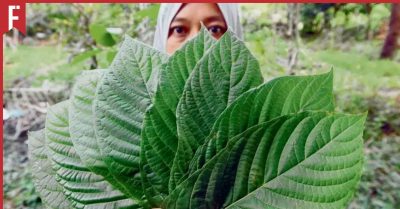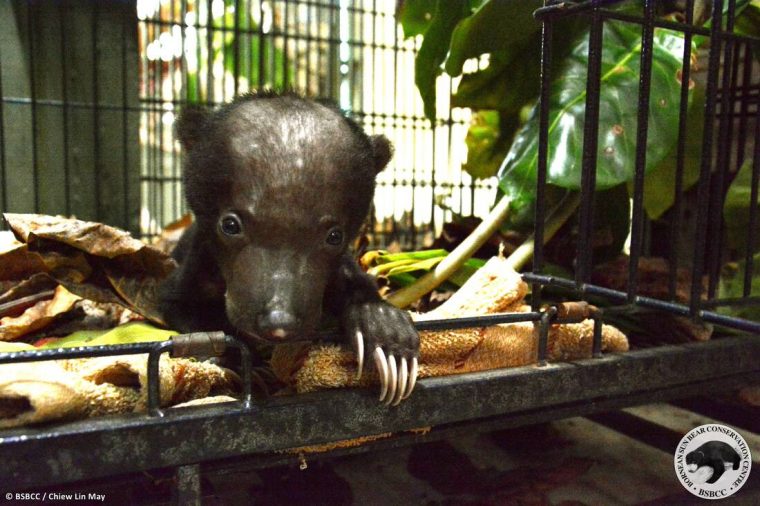
Five months ago, a young sun bear cub was found wandering alone in an orchard in Ranau, Sabah. The villager who rescued her decided to keep her as a pet. Named ‘Betung’, the little bear cub spent five months stuck in a chicken wire mesh cage and fed only Lactogen milk powder.
Fortunately, Betung was eventually rescued by the Sabah Wildlife Department, who promptly passed her on to the Bornean Sun Bear Conservation Centre (BSBCC). According to Research and Reintroduction Officer Chiew Lin May, when they first met Betung, she was in a bad state.
“Her weight was 1.4kg and she was in a poor condition,” Chiew recalled. “Growth stunted, underweight, super weak, malnourished, emaciated and suffering with alopecia on the head and body.”
Unfortunately, Betung was simply the latest victim of the cruel exotic pet trade. The odds were stacked against the little cub, but fortunately, Betung was rescued before it was too late.
A Real Life Winnie-the-Pooh

Before we continue Bentung’s tale, we should probably rewind a bit to answer the most pressing question: What is a sun bear?
The smallest bear species in the world, sun bears are also considered the second rarest bear species after the giant panda. Native to the tropical forests of Southeast Asia, sun bears are the only arboreal bear species, meaning that they live mainly in the trees (which is why they don’t grow as big as their cousins, the grizzly and polar bears).
Sun bears are omnivores, feeding mainly on fruits, berries and insects, though they are also known to have a sweet tooth — one of their Malay names, ‘beruang madu’, literally means “honey bear”. Their English name comes from the white markings on their chests, which is said to resemble the rising sun. Strangely enough, no two markings are exactly alike.
Sun bears play an important role in maintaining our natural ecosystem. They help to disperse seeds and control termite populations, which keeps tropical trees healthy. Aside from that, their feeding behavior — tearing open tree trunks to reach the honey inside — creates nesting sites for many other animals such as hornbills and flying squirrels.
Why Are They in Danger?
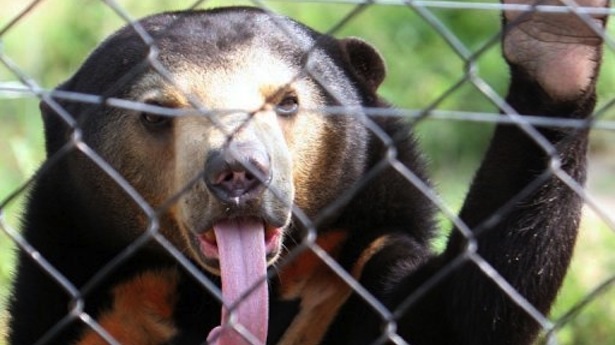
Over the past 30 years, the sun bear population has dropped by at least 30%, causing them to be classified as a ‘vulnerable’ species in 2007. Unfortunately, sun bears are one of the least researched bear species in the world. Their low numbers and natural reclusiveness makes it difficult for scientists to study them in their natural habitat.
Today, wild sun bears are facing three main threats:
Deforestation
Like many other wild animals, sun bear numbers have plunged as a result of habitat loss. Over the last few decades, plantation development, illegal logging and human-caused fires have devastated the tropical forests that the sun bears call home.
Poaching
Despite being a protected species, poachers still hunt sun bears in order to get their hands on bear paws, bile and gall bladders (all of which are used in traditional Chinese medicine).
Pet trade
Sun bears may be cute, but that doesn’t mean that you should buy one as a pet. In the vast majority of cases, pet sun bears are orphans; poachers will kill the mother and sell off the cute cubs with no regard for the animal’s well-being.
Let the Sun Shine Brighter for Sun Bears!
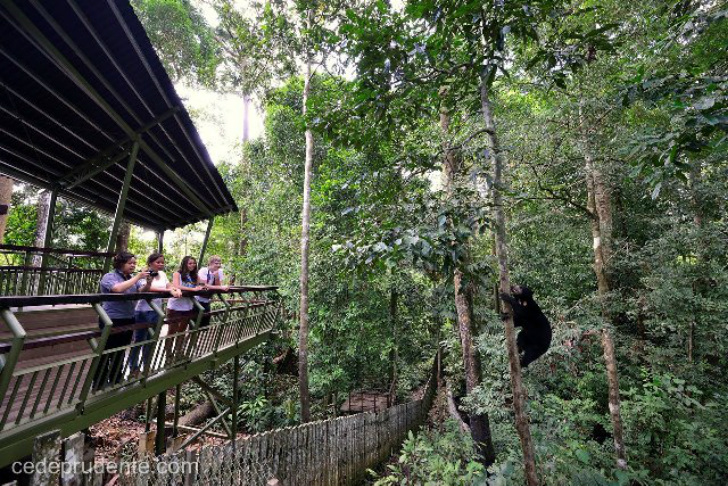
Fortunately for the sun bears, there are many people who are doing their best to save this remarkable species. Located in Sabah, the BSBCC is currently the only sun bear conservation centre in the world, providing care and rehabilitation to rescued sun bears since 2008.
Their founder, Dr. Wong Siew Te, was driven to establish the centre after witnessing the abuse and mistreatment suffered by captive sun bears by unlicensed zoos and private collectors.
Today, BSBCC is home to no less than 45 rescued sun bears — orphans and ex-captives alike. They strive to provide their rescuees with a better life and eventually release them back into their natural habitat.
BSBCC also serves as an educational and ecotourism centre. Since 2014, they have drawn in over 230,000 tourists both locally and abroad. Visitors not only get a chance to view wild sun bears up close and personal, but also learn more about this rare and amazing creature.
How Can You Help?

While you can of course volunteer your time or donate your money, there are other options available if you want to make a difference.
This month, animal lovers can help by signing up for the Sun Bear Virtual Run 2020, a special new project that aims to raise awareness on the plight of the sun bear and raise the funds needed to keep the BSBCC going during these troubled times.
This event ends on 15 September, so strap on your running shoes and get ready to break your racing records! Those who complete the challenge will receive a T-shirt, a medal and an e-certificate as proof of their hard work and generosity.
A Brighter Future for Betung
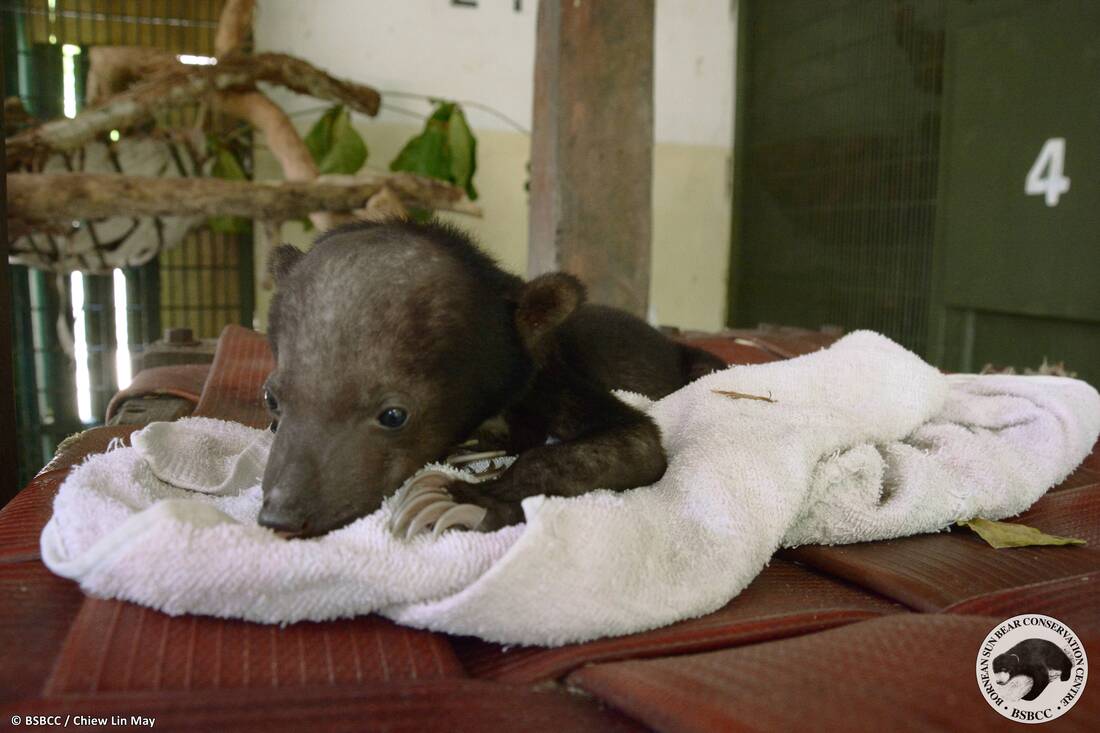
After receiving intensive treatment from BSBCC’s experienced vet team, Betung is now settling into her new home. Dedicated cub keepers Adrian and Danny do their best to help her feel safe and loved, providing 24-hour care and seven feeds a day.
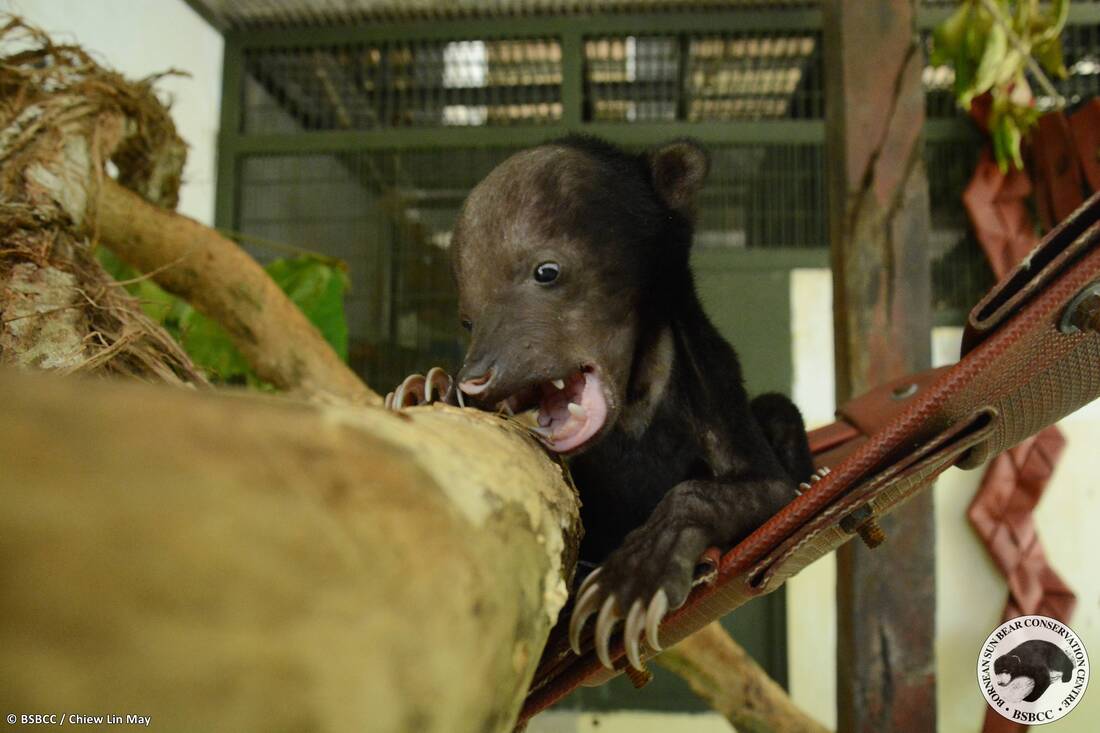
On 29 August 2020, Betung became healthy enough to be moved into a larger den, one filled with all sorts of climbing structures, toys and treats to keep her enriched and stimulated. Though she is still tiny and weak, this little cub is happy to explore her surroundings and has been learning to climb and dig just like a grown-up sun bear!
While she is still not completely out of the danger zone, little Betung is starting to grow and thrive. One day, we hope all sun bears can be as lucky.
Unfortunately, sun bears aren’t the only Malaysian animal in danger of dying out. If you’re an animal lover, be sure to check out our previous article on the Malayan tiger to learn how you can help to save this unique species from extinction.







